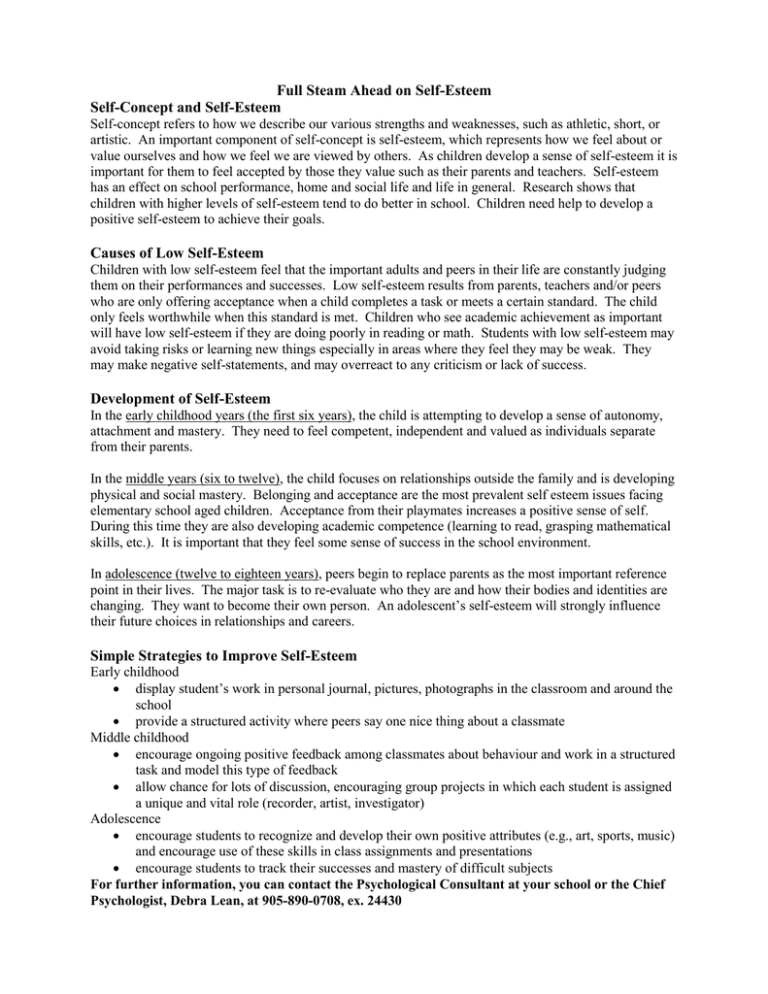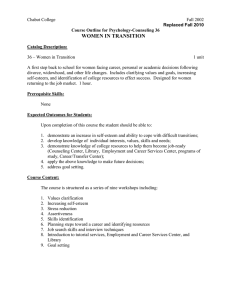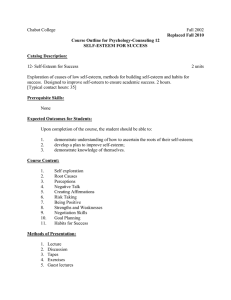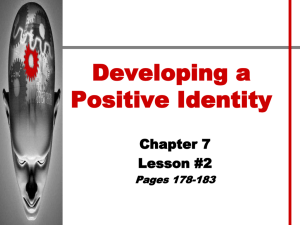Full Steam Ahead on Self-Esteem Self-Concept and Self-Esteem
advertisement

Full Steam Ahead on Self-Esteem Self-Concept and Self-Esteem Self-concept refers to how we describe our various strengths and weaknesses, such as athletic, short, or artistic. An important component of self-concept is self-esteem, which represents how we feel about or value ourselves and how we feel we are viewed by others. As children develop a sense of self-esteem it is important for them to feel accepted by those they value such as their parents and teachers. Self-esteem has an effect on school performance, home and social life and life in general. Research shows that children with higher levels of self-esteem tend to do better in school. Children need help to develop a positive self-esteem to achieve their goals. Causes of Low Self-Esteem Children with low self-esteem feel that the important adults and peers in their life are constantly judging them on their performances and successes. Low self-esteem results from parents, teachers and/or peers who are only offering acceptance when a child completes a task or meets a certain standard. The child only feels worthwhile when this standard is met. Children who see academic achievement as important will have low self-esteem if they are doing poorly in reading or math. Students with low self-esteem may avoid taking risks or learning new things especially in areas where they feel they may be weak. They may make negative self-statements, and may overreact to any criticism or lack of success. Development of Self-Esteem In the early childhood years (the first six years), the child is attempting to develop a sense of autonomy, attachment and mastery. They need to feel competent, independent and valued as individuals separate from their parents. In the middle years (six to twelve), the child focuses on relationships outside the family and is developing physical and social mastery. Belonging and acceptance are the most prevalent self esteem issues facing elementary school aged children. Acceptance from their playmates increases a positive sense of self. During this time they are also developing academic competence (learning to read, grasping mathematical skills, etc.). It is important that they feel some sense of success in the school environment. In adolescence (twelve to eighteen years), peers begin to replace parents as the most important reference point in their lives. The major task is to re-evaluate who they are and how their bodies and identities are changing. They want to become their own person. An adolescent’s self-esteem will strongly influence their future choices in relationships and careers. Simple Strategies to Improve Self-Esteem Early childhood display student’s work in personal journal, pictures, photographs in the classroom and around the school provide a structured activity where peers say one nice thing about a classmate Middle childhood encourage ongoing positive feedback among classmates about behaviour and work in a structured task and model this type of feedback allow chance for lots of discussion, encouraging group projects in which each student is assigned a unique and vital role (recorder, artist, investigator) Adolescence encourage students to recognize and develop their own positive attributes (e.g., art, sports, music) and encourage use of these skills in class assignments and presentations encourage students to track their successes and mastery of difficult subjects For further information, you can contact the Psychological Consultant at your school or the Chief Psychologist, Debra Lean, at 905-890-0708, ex. 24430






